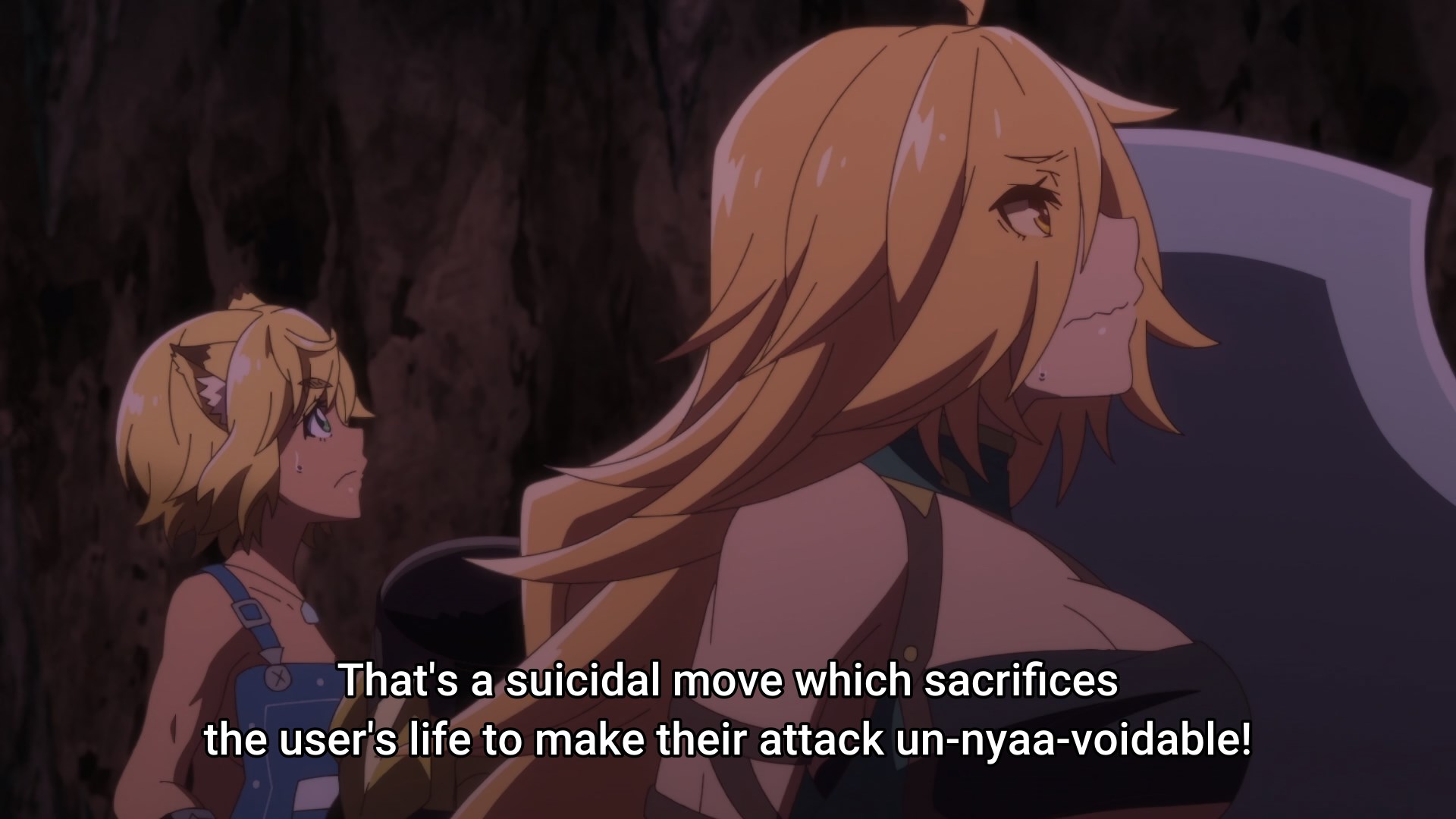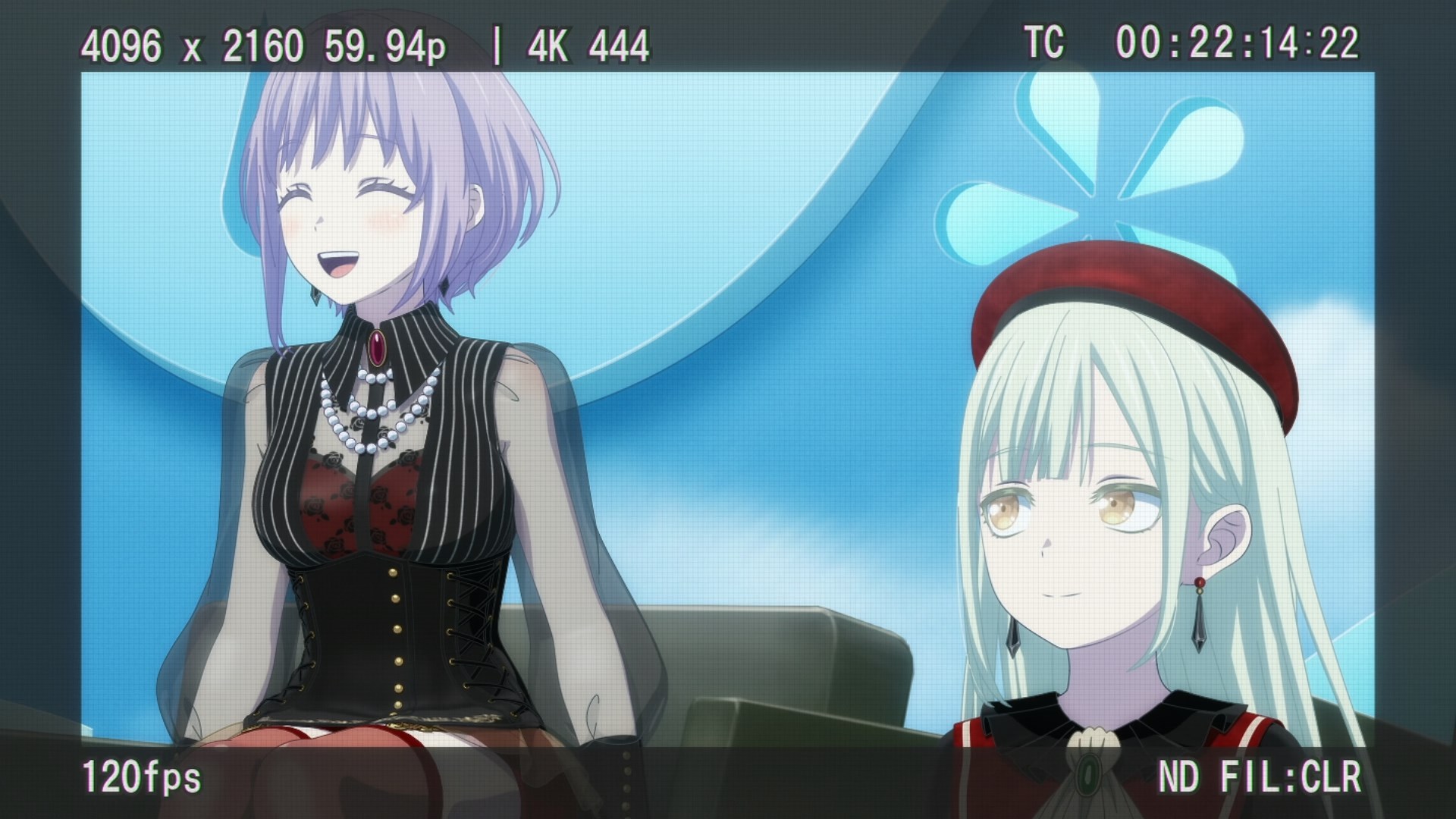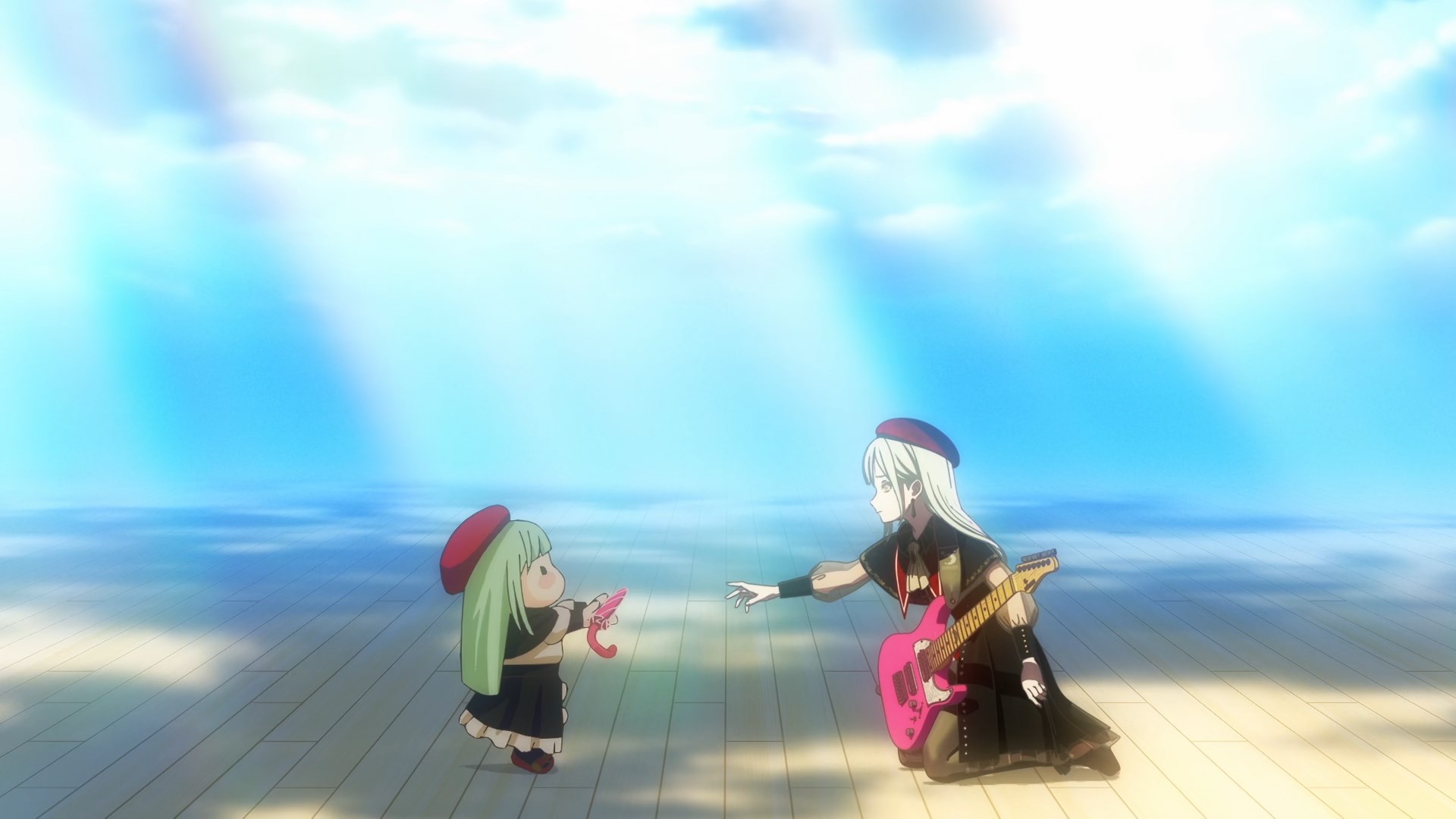Is seeing the obnoxious puns the translatoer has come up with for the cat girl this time:

Is seeing the obnoxious puns the translatoer has come up with for the cat girl this time:

Four episodes on, I still cannot stop thinking about Mutsumi and Nyamu’s relationship, as it was in episode four, just before everything came crashing down for Ave Mujica:

I’ve been trying to write about Mutsumi and Nyamu for ages, ever since the first episode of Ave Mujica came out. Mutsumi has fascinated me ever since Mygo; the little we saw of her there reminded me so much of Tomori. They seemed to share the same sort of awkwardness, the same sort of differences fitting in with other people and reading social cues. There’s a scene early in that series where Mutsumi is greeted by a class mate and it takes her a few seconds to react, that first gave me that idea that she’s like Tomori. The present she gave in episode ten to congratulate Mygo!!!!! on their ‘reunion’ concert was another big hint for me. Here’s somebody who’s portrayed as being neurodivergent, not exactly the same as Tomori, but similar. If we can draw parallels between MyGo!!!!! and Ave Mujica, she’s clearly the latter’s version of Tomori.
Does that make Nyamu Ave Mujica’s Anon?
There certainly are similarities. Like Anon she’s a newcomer to the established relationship between Sakiko, Mutsumi and Uika (does that make Umiri the Raana equivalent) and like Anon did to Tomori, she latches on to Mutsumi for her personal gain. What she’s lacking so far is Anon’s innate kindness. Anon wasn’t above using Tomori or Soyo to increase her own popularity, but her selfishness has limits; she doesn’t want her actions to hurt them.
Not something Nyamu seemed to care about with regards to Mutsumi.

Anon found something in Tomori that she lacked herself, but the same was true in reverse, with Tomori finding a strength in Anon she lacked herself. The relationship between Nyamu and Mutsumi is more complicated than that. Like Anon, Nyamu does find something in Mutsumi she’s lacking herself, but it frightens her. Enough that she rejects an invitation to do a stage play because Mutsumi’s acting talent scares her so. Neither is she perceptive enough to understand the change ‘Mutsumi’ had undergone at the end of episode three. All she saw was the acting talent that scared her.
It is the Anon/Tomori relationship as seen through a glass darkly, distorted, wrong, fitting in well with how Ave Mujica as a whole seems like a dark mirror version of MyGo!!!!!.
As the poster for 1982’s action epic Megaforce had it. A motto a certain breed of liberal Biden defender and Democrats stan should adopt, as even now they keep putting more value on what’s being said than what’s being done. Throughout the genocide in Gaza I ran into people who took what Biden was saying at face value while refusing to take his actions into account. If Biden said he was working on a peace plan that must be true and that means you can ignore him sending more bombs and weapons to Israel and still vote for Harris. The mantra for anybody who argued against this was that “Trump would be worse” while Gaza was flattened and tens of thousands were murdered. A complete refusal to accept what a Democratic president was perpetrating in reality justified with a hypothetical. Instead of putting pressure on the Democrats to stop the genocide, this type of liberal rather spent their time scolding strangers online for not believing enough in what’s in Biden’s heart.
What frustrated me in this is not even that these people were comfortable having the genocide in Gaza as the price to pay for their own safety, but their refusal to admit that this was what they were doing. Plenty of Democratic voters were both revulsed by their party’s ongoing support for genocide yet still felt compelled to vote for them considering what Trump had in store for America. So many people I talked to in the run up to the election felt helpless and frustrated because of this. But not these people. Even as Trump got Netanyahu to (temporarily) end the genocide, they still put more stock in what he’s saying than in what he’s doing, as with his recent remarks on wanting to remove all Palestinians from Gaza.
This for them is supposed to prove once and for all that Trump is worse than Biden, that they were right to not protest and that those who did were handing Trump the election. Unfortunately, even on their own terms this does not hold water, because Biden too talked about evacuating Gaza:
The plan to empty Gaza of Palestinians—while insisting that it’s a temporary measure for their own good—is an eerie echo of former President Joe Biden’s approach to the region. In the first few days of the war, the Biden administration tried to push Egypt to accept a mass exodus of Palestinians. Bringing up that possibility again, now that the bombs have stopped dropping, is seen by both Arab and Israeli figures as an attempt to restart the war.
Yes, in Biden’s case this was supposed to be temporary and for humanitarian reasons, but that’s the case for Trump too. Trump talked about how Gaza is “literally a demolition site right now, almost everything is demolished and people are dying there” as his justification and Biden’s argument was little different. It makes some sense to evacuate and individual Palestinian families have chosen exile over remaining in a war zone, but does anybody really expected Israel to allow them to return once they left? Even if done for different motives, the end result in both cases would be the same, an emptied Gaza with its population in permanent exile as Israel would never let them return. After all, they haven’t allowed the 1948 refugees to return either.
Episode six of Ave Mujica was filled with heavy scene after heavy scene, but this particular one stood out to me:

Umiri was introduced way back in MyGo as Taki’s classmate, maybe friend and bass player for sixty bands. She’s always been shown as a professional, never emotionally involved with any of the bands she played for. Her role in Ave Mujica was the same, always the one who kept reminding the other members of their engagements and such. This must be the first time that somebody has told her that this isn’t enough to be in a band. If all she can see is just the band and not the actual people in it, how can she claim to be a part of it?
That time a stray cat decided to have her kittens in a prison yard.
I had not touched a cat in 15 years when an orange kitten wandered over to sit with me in the grass one day. I was left without adequate words to describe that experience. It reminded me that I am alive. It instilled in me a raw, unbridled happiness that I had never felt before, not even as a child.